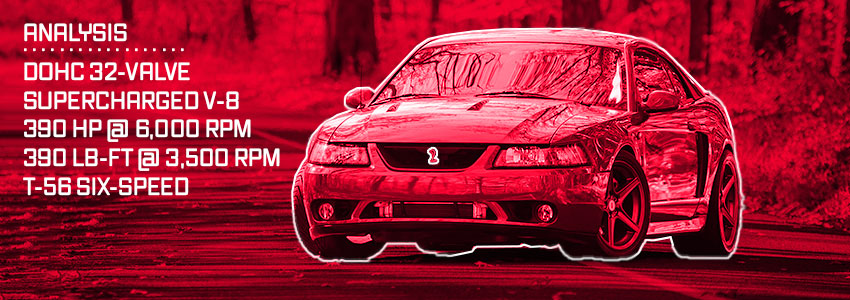
Throughout Mustang history, there have been many unique models to have come out of Ford Motor Company.
When the Mustang was at its heights in the late 1960s, everyone from Ford, Chevrolet, and Mopar pushed
the envelope to see who could bring out the baddest pony car to date.
Fortunately, for Mustang enthusiasts, we had the man, myth, and legend in Carroll Shelby. Turn to 1966,
where everything was turning up to eleven in the American automotive and racing industry, especially
after the legendary Ford GT won at the 24 Hours Of Le Mans. The following year in 1967, Ford and Shelby
came together to take it straight to the fellow domestic competition with the introduction of the
monstrous Shelby GT500.
It was the first among many insane Mustang models to come out of Shelby's genius mind to unleash venom to
the public at a record-setting pace. To create the immense performance Carroll set out to create, he
dropped in the legendary 427 Cubic Inch Ford V8 that was found in the Le Mans-winning Ford GT40 in the
1967 Shelby GT500. He single-handedly triggered the horsepower wars that we still see today among the
big three automakers from Detroit. Why is this so imperative to how it translates to the twenty-first
century? It is because the heritage and mindset trickled its way throughout Mustang history to bring in
the almighty and hallowed 2003-2004 SVT Cobra, aka " Terminator."
Unlike any of the SN95 or New Edge Cobra model to date, the Terminator Cobra was the first to
receive
a complete overhaul of suspension, drivetrain, specific transmission, and a factory-built Eaton
supercharger sitting on top of the infamous 4.6L 32V Modular V8 engine. Throughout the two years
it was
built, there was a saying in which the Terminator Cobra single handly retired the Camaro from
production. In the course of this article, Team Steeda is going to give you an in-depth insight
into why
the 2003-2004 SVT Cobra is still revered as the most venomous to come out of Dearborn to date!
Terminator Exterior
Inside The Terminator
Supercharged Venom
Tremec Transmission
Independent Rear Suspension
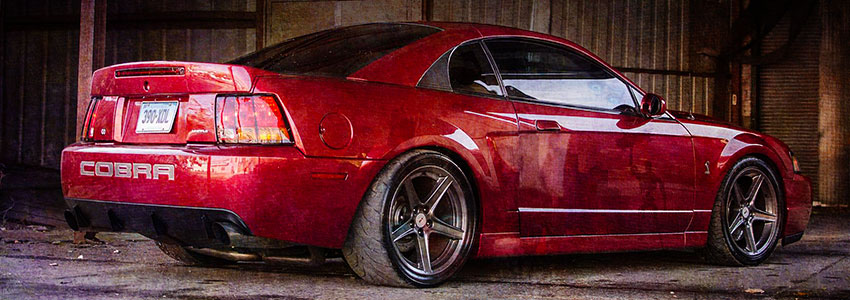
Terminator Exterior
To understand how the Terminator Cobra's design and influence came to fruition, we have to go
back to
1994 when the SN95 Mustang debuted to the world. When the SN95 launched, it was the first
Mustang to
have accentuated curves, unlike any other generation beforehand. The 1995 Cobra R innovation set
a
precedent for all Cobra Mustang models to follow, especially when it came to the form and
functionality
of its exterior design cues and aerodynamic properties. When the new edge stallion debuted in
1999, it
pushed the envelope yet again, giving it more curves and distinguished design properties,
especially
when it came to the 2000 Cobra R.
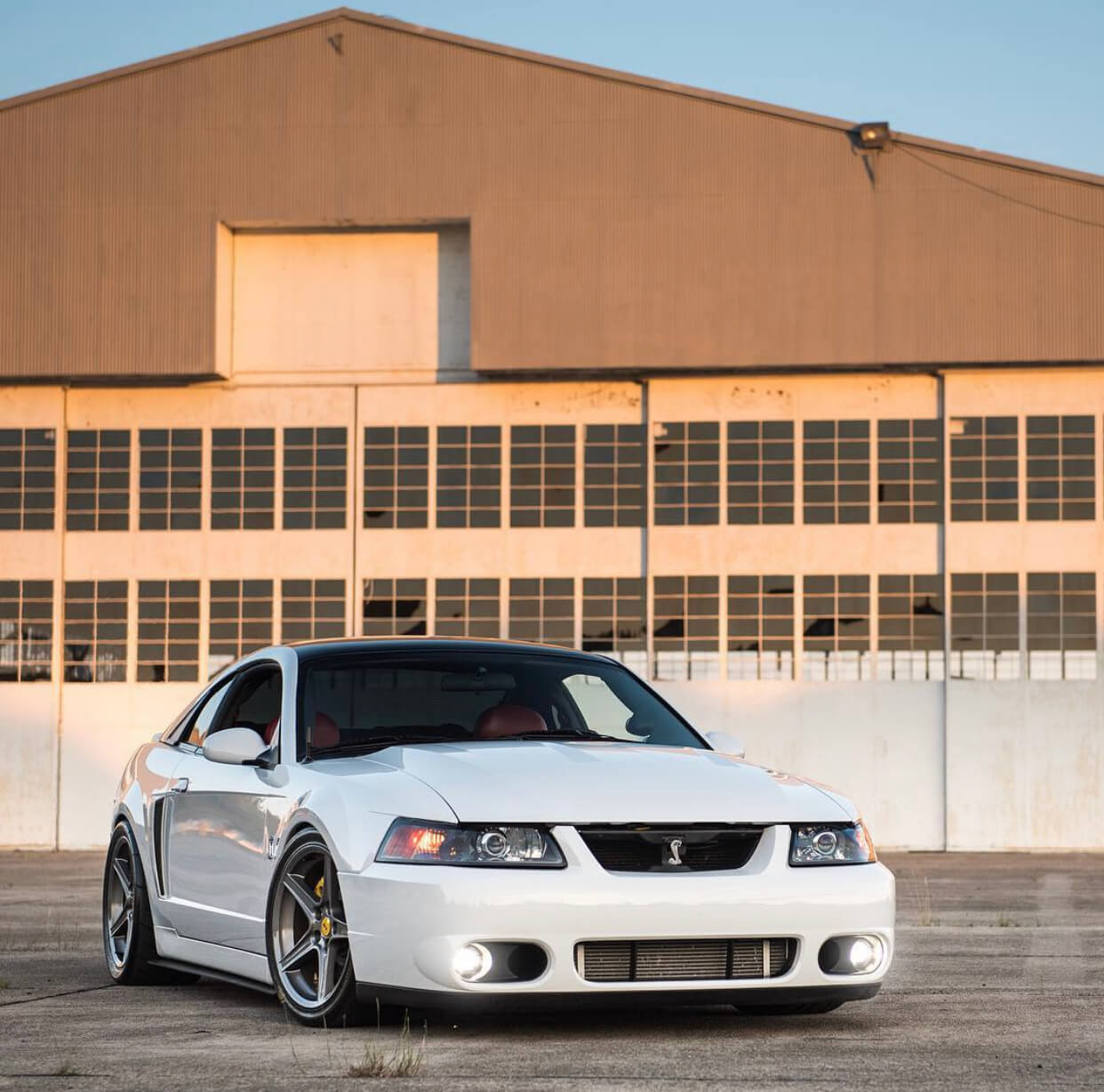
This set the groundwork for Mustang and SVT designers to come up with the most
sinister and vicious-looking Cobra ever to hit America's race tracks or streets. Starting from
the
front, the Terminator has a much more aggressive front bumper to aid in ground effects that
every
Mustang enthusiast desires while integrating larger air opening to help bring cold air into the
massive
supercharged engine. Ensuring everyone knows what is coming up in your rearview mirror, a large
Cobra
emblem is front and center in the upper grille. Unlike the New Edge Mustang GT, the Terminator
Cobra has
a power bulging hood with large heat extractors to promote power and sophistication.
Simultaneously, the
fenders and quarter panels give it curves to represent the muscle that sits underneath the hood.
Moving to the rear of the 2003-2004 SVT Cobra, whereas many Cobra models prior had pedestal
spoilers
equipped, the Terminator has a pedestal spoiler the aids in both styling but most prominently
aerodynamic efficiency while stating "I'm here to take it to the competition." The rear bumper
cover, like
the front, indicates being more aggressive with an indentation for Cobra lettering and two large
openings for the massive exhaust tips to come through. SVT engineers and designers were out to
ensure
that would be the only view the competition would see. These characteristics and design
implementations
are why anyone in the automotive community can clearly distinguish a Terminator Cobra from the
rest of
any Mustang lineup. Sixteen years later, to this day, it is still sought after as one of the
best
looking Mustang models to date.

Inside The Terminator
From this era of Mustang, the interior standards are not what you would expect today, especially
when you
compare it to the S550 Mustang interior. At this time, Ford was looking to push the envelope in
terms of
performance than they were interior design, but at the same time, giving the Terminator key
attributes
that it would separate itself from the Mustang lineup. Unfortunately, the interior had many
plastics and
rubber materials that were used, and at the same time, taking into account, this is the early
2000s
technology and materials. Like all Mustang models, the famous double brow dashboard has always
been
prominent throughout every stallion generation; the Terminator Cobra is no different to this
formula.
The 2003-2004 Cobra interior separates itself from the rest of the lineup in a few areas,
including
bucket seats that feature larger bolstering, higher-grade leather, alcantara, sportier gauge
package,
and specific steering wheel to enhance the standard Mustang GT interior features. Whereas the
Cobra
exterior is centered on form and function, engineers and designers at SVT weren't as focused on
the
interior as making the Terminator into the evilest factory built Cobra ever built to date. It is
where
we turn to how SVT got to its hallowed nickname that every enthusiast knows far and wide.
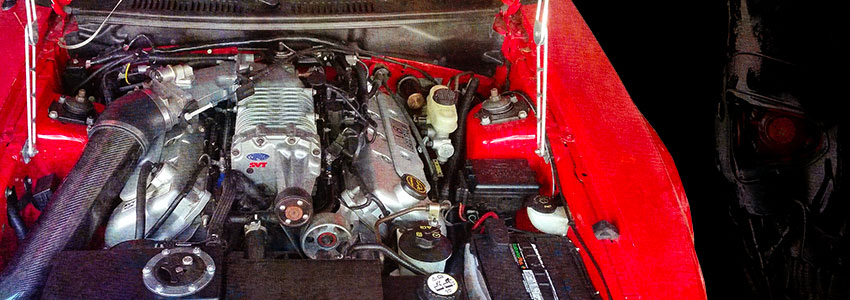
Supercharged Venom
Throughout the entire history of Ford Motor Company, there have been so many famous and hallowed
engines
that have been conceived by the incredible minds of Ford engineers. The engine that started the
reign of
V8 Mustang performance for decades to come was the legendary monstrous 427 cubic inch V8, aka
"Beast"
found in the Ford GT40, responsible for taking down Ferraris reign at the 24 Hours of Le Mans.
It
started the push of technological and engineering marvels, which led to Mustang engine
innovation's next
five decades, helping find its way into the behemoth of an engine found in the 2003-2004 SVT
"Terminator" Cobra.
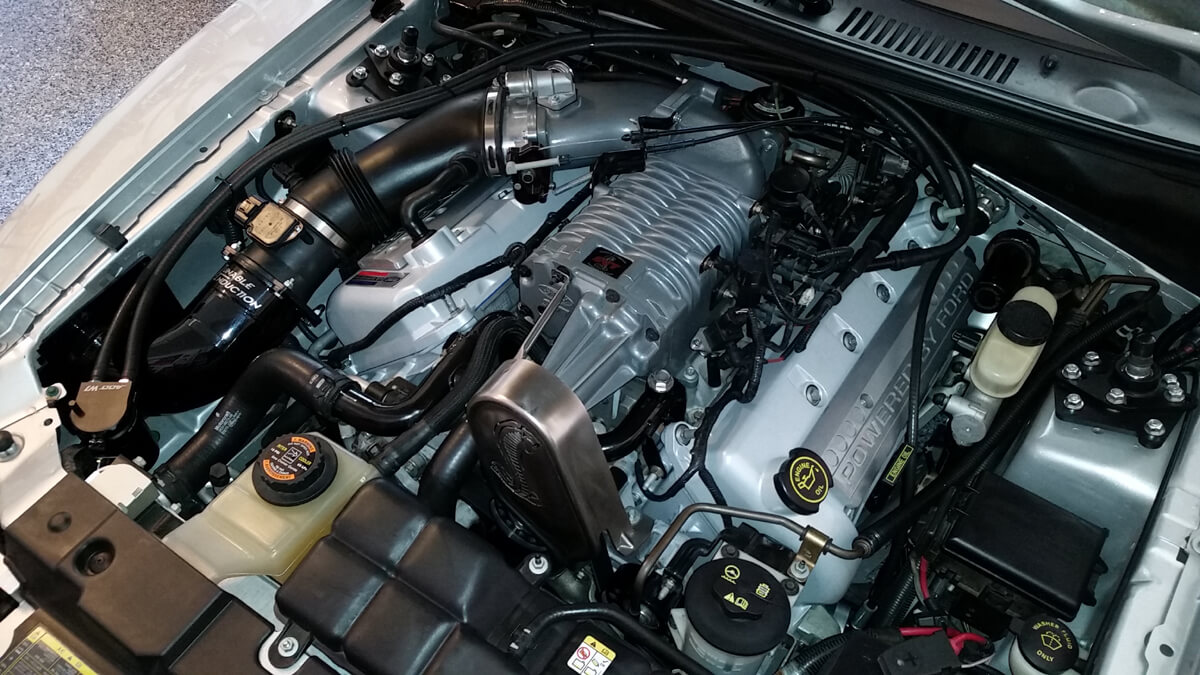
To understand how the Terminator Cobra engine came to be, we have to go back to 1996 when the
modular
engine debuted both in the Mustang GT and the Cobra. Unlike past Mustang models, they all used
pushrod
technology with a single camshaft within the engine block. Modular Ford motors use overhead
camshaft
timing to produce better efficiency and power to aid in all-out performance. The engine that
benefitted
most from this technology is the 4.6L 32V V8, where it is equipped with dual overhead camshaft
timing,
which helped increase redline, torque, airflow, and power distribution. It was the first engine
ever to
feature this type of technology in modern Mustang history.
Unlike the Cobra models from 1996-2001, the Terminator was the first to have Manley forged
aluminum
connecting rods, cast aluminum pistons, and a forged crankshaft to allow maximum horsepower and
torque.
The necessity of this was the ability to handle the tremendous amount of boost pressure coming
from a
first-ever factory-installed 1.9L Eaton supercharger. Since every engine was hand-built by two SVT
engine builders, each motor has been known to have different power levels than the designated 390
horsepower and 390 lb/ft of torque; some have seen well over 400 horsepower underneath the hood. Now
you're probably wondering why it got the nickname " Terminator?" Throughout Ford's history, they have
been giving
codenames to all their unique engines. It just happens that the head of the Mustang was John
Colletti him and his team while developing the 2003-2004 Cobra found that because the
supercharged 4.6L 32V V8 made so much power for its time, they came up with the code name
Terminator. They thought it would terminate the competition, which it did, and it is said
that the Terminator Cobra helped retire the catfish Camaro.
Cobra "Terminator" 4.6L 32V Supercharged V8 Engine Specs
| Measurement |
Technical Specification |
| Configuration |
Cast aluminum block and heads |
| Intake Manifold |
1.9L Eaton Roots Style Supercharger |
| Exhaust Manifold |
Cast Steel headers |
| Valvetrain |
DOHC 32V |
| Pistons |
Cast aluminum |
| Connecting Rods |
Forged aluminum |
| Ignition |
Distributor-less with coil on plug design |
| Bore X Stroke |
3.55 in X 3.54 in |
| Displacement |
4.6L/281 Cubic Inches |
| Compression Ratio |
11.0:1 |
| Engine Control Sytem |
PCM |
| Horsepower |
390 @ 6,000 RPM
|
| Torque |
390 LB/FT of Torque @ 3,500 RPM |
| Recommended Fuel |
93 Octane |
| Fuel Delivery |
Electronic FUel Injection |
| Oil Capacity |
6.5 quarts 5W-30 Full Synthetic (3,000-mile service interval) |
| Redline |
6,500 RPM |
Tremec Transmission
During the early 2000s, many companies, including Chevrolet and Ford alike, were pushing
to have more
capability in terms of how each of their performance vehicles would transmit power. To
make this happen,
SVT reached out to their friends over at Tremec
Transmission to implement
a first-ever six-speed manual
transmission to handle the power and torque the Terminator engine produces. It has to be noted that the
standard five-speed transmission could not hold up to the brute force the supercharged 4.6L 32V V8
produces.
To counteract these significant issues, SVT engineers relied heavily on Tremec to develop a more stout
version of the legendary T-56 6-speed manual transmission to handle the substantial torque it would have
to transmit through the drivetrain. Fortunately, the latest T-56 was the best engineered to date; with
close-ratio
gears, short-throws, and stout 27-spline output shaft, it could handle a tremendous amount of power this
time. The T-56 could hold at most 400 lb/ft of torque with the factory clutch and flywheel. It is why we
suggest upgrading these components with a more stout flywheel, clutch,
and
short-throw shifter if
you decide to add more power; this will aid to
counterbalance the T-56 manual
transmission's weak points. The great things about Tremec are that they have been proven throughout
Mustang history, starting from the Fox Body to the modern S550 pony. It helps separate the 2003-2004
Cobra from the rest of its competition to help take out its biggest rival in the Camaro.
BorgWarner/Tremec T-56 Transmission Gear Ratios
| Year |
1st |
2nd |
3rd |
4th |
5th |
6th |
Reverse |
| 2003-2004 |
2.66 |
1.78 |
1.30 |
1.00 |
0.80 |
0.63 |
2.90 |
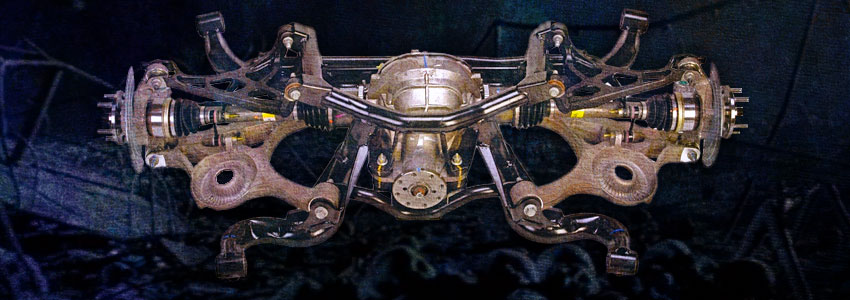
Independent Rear Suspension
The Mustang is the only pony car to have been in continuous production for more
than fifty years.
Simultaneously, the original pony car has been fabled for all the
accomplishments on and off the race_x000D_
track. Over the six generations of Mustang, it failed to come to modern times
because of a solid-rear
axle. Well, all of this changed when Ford introduced its first attempt at their
version of an
independent rear suspension in the 2001 SVT Cobra. For Mustang and Cobra fans
alike, it was the first
glance of getting to compete with other sports cars that were twice the money on
the road course or
autocross.
A couple of years later, when the 2003 SVT Terminator Cobra debuted, it
progressed with IRS (Independent
Rear Suspension) technology to help put the power down better and give new
owners the real handling that
John Coletti envisioned for the Mustang faithful during that period. As the
years went on, the
implementation set the stage for what would help the S550 Mustang become so
successful today. Some say
without Colletti's influence of combining the 2003-2004 Cobra with IRS, who
knows where the suspension
dynamics would be without this engineering marvel. Furthermore, companies like
Steeda were some of the
first to develop
performance suspension modifications such as lowering springs, shocks, and coilovers to help the
Terminator handle better both on the street or at the local road course and bring it to the next level
of performance.

Image Credit: Michael Mucciaccio
Related Articles












